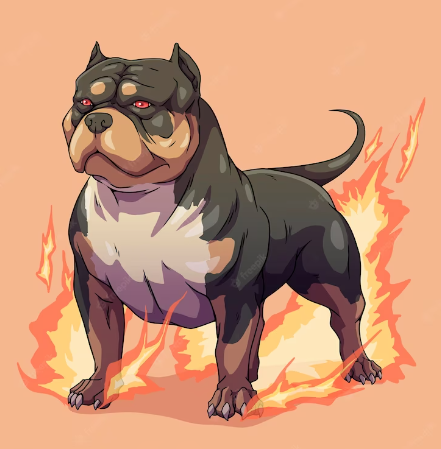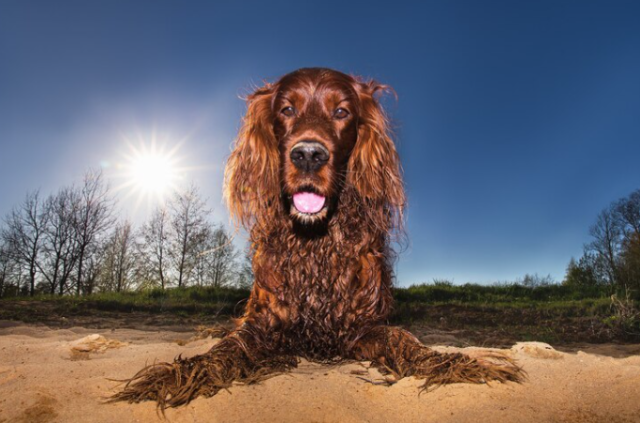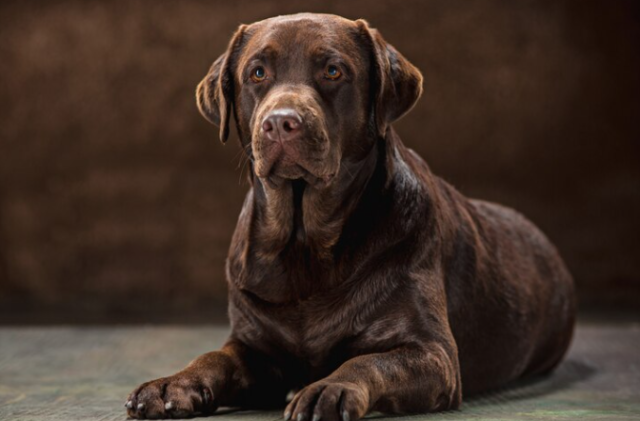Introduction
Are you a dog lover seeking a four-legged companion that leaves an impression? Look no further than the fascinating world of the heaviest dog breed. From gentle giants to majestic powerhouses, these impressive canines are sure to capture your heart. In this article, we will delve into the characteristics, care, and unique qualities of the heaviest dog breeds. Discover which breed might be the perfect fit for your family and home.

What Defines the Heaviest Dog Breed?
Before we delve into specific breeds, let’s understand what makes a dog breed heavy. The weight of a dog is determined by its bone structure, muscle mass, and overall build. While height can vary, it is the weight that truly sets these breeds apart. Let’s explore some of the most notable contenders in the world of heaviest dog breeds.
The Gentle Giants: Great Danes
Standing tall with grace and poise, Great Danes are truly gentle giants. Their sheer size is awe-inspiring, with adult males weighing anywhere between 140 to 175 pounds (63 to 79 kilograms). Despite their imposing presence, Great Danes are known for their friendly and affectionate nature. These intelligent dogs make excellent family companions and are surprisingly gentle with children.
The Mighty Mastiffs: English Mastiff
When it comes to weight, English Mastiffs take the crown. These majestic dogs can weigh up to a staggering 220 pounds (100 kilograms) or more. With their massive heads, powerful frames, and calm demeanor, English Mastiffs exude a sense of strength and stability. They are known for their loyalty, making them wonderful protectors and companions.

The Mountain Dogs: Saint Bernards
If you seek a dog breed that combines size and kindness, look no further than Saint Bernards. These mountain dogs have a rich history of rescuing stranded travelers in the Alps. Saint Bernards can reach weights of 140 to 180 pounds (63 to 82 kilograms). Their thick, weather-resistant coats and gentle temperament make them excellent family pets, particularly in colder climates.
The Burly Bernese: Bernese Mountain Dog
Hailing from the Swiss Alps, Bernese Mountain Dogs possess an irresistible charm and a sturdy frame. These lovable giants weigh between 80 to 115 pounds (36 to 52 kilograms). Renowned for their striking tri-color coats and friendly nature, Bernese Mountain Dogs thrive in active households. They are highly adaptable and excel in various roles, including therapy work, herding, and companionship.
The Mighty Muscles: Bullmastiffs
Bullmastiffs are robust, muscular dogs that epitomize strength. Males can weigh between 110 to 130 pounds (50 to 59 kilograms), showcasing their powerful physique. Originally bred as guardians, Bullmastiffs are known for their protective instincts and loyalty. Despite their imposing stature, they are gentle with family members and make for excellent watchdogs.
Other Noteworthy Heaviest Dog Breeds
While we have explored some of the prominent heaviest dog breeds, several others deserve mention. The Tibetan Mastiff, Leonberger, Neapolitan Mastiff, and Dogue de Bordeaux also rank among the largest and heaviest dog breeds. Each breed brings its own unique qualities
Care and Considerations for Heaviest Dog Breeds
Owning the heaviest dog breed comes with its own set of responsibilities. Here are some important factors to consider:
-
Exercise Needs: Despite their size, the heaviest dog breeds require regular exercise to maintain their physical and mental well-being. Daily walks, playtime, and ample space to roam are essential to keep them happy and healthy.
-
Diet and Nutrition: Proper nutrition is crucial for these large breeds. Consult with a veterinarian to determine the appropriate diet and portion sizes to support their growth and overall health. High-quality, balanced dog food specifically formulated for large breeds is recommended.
-
Grooming: Heaviest dog breeds often have dense coats that require regular grooming. Brushing their fur helps to prevent matting and keeps their coat healthy and shiny. Additionally, pay attention to their nails, ears, and teeth to maintain good hygiene.
-
Space Requirements: These dogs need ample space to move around comfortably. A spacious yard or access to a nearby park is ideal for their exercise needs. However, even in smaller living spaces, with sufficient exercise and mental stimulation, they can adapt well.
Comparing Heaviest Dog Breeds: Size and Temperament
To provide a comprehensive overview, let’s compare some key aspects of the heaviest dog breeds in a table:
| Breed | Weight Range | Temperament |
|---|---|---|
| Great Dane | 140-175 lbs | Friendly, Gentle, Devoted |
| English Mastiff | 220+ lbs | Calm, Dignified, Loyal |
| Saint Bernard | 140-180 lbs | Gentle, Patient, Loving |
| Bernese Mountain Dog | 80-115 lbs | Affectionate, Intelligent |
| Bullmastiff | 110-130 lbs | Protective, Loyal, Brave |
Conclusion
In conclusion, the world of heaviest dog breeds offers a remarkable array of companions. From the elegant Great Danes to the mighty English Mastiffs, these dogs captivate with their size, temperament, and unique qualities. It’s important to consider their exercise needs, nutrition, grooming requirements, and the space available in your home. With the right care and attention, these gentle giants can bring immeasurable joy and love to your family.
FAQs
Q1: What is the heaviest dog breed in the world?
The English Mastiff holds the title for the heaviest dog breed, often weighing over 220 pounds or more.
Q2: Are heaviest dog breeds suitable for families with children?
Yes, many heaviest dog breeds, such as Great Danes and Bernese Mountain Dogs, are known for their gentle and friendly nature, making them excellent companions for families with children.
Q3: Do heaviest dog breeds require a lot of exercise?
Yes, heaviest dog breeds have moderate to high exercise needs. Daily walks, playtime, and mental stimulation are essential to keep them healthy and happy.
Q4: Are heaviest dog breeds prone to any health issues?
Like any other breed, heaviest dog breeds may be prone to certain health issues, such as joint problems, hip dysplasia, and bloat. Regular veterinary check-ups and a healthy lifestyle can help mitigate these risks.
Q5: Can heaviest dog breeds adapt to apartment living?
While heaviest dog breeds do require space to move around, they can adapt to apartment living with sufficient exercise and mental stimulation. Regular outdoor activities and playtime are essential to keep them physically and mentally stimulated.
Read also
- Dog Food Storage Container: Keeping Your Pet’s Meals Fresh and Organized
- Discover the Best Dog Food for German Shepherd Puppy: Unveiling the Ultimate Guide!
- Best Dog Food for Pitbull Puppies: A Guide to Nourishing Your Furry Friend
- Discover the Fascinating Bear Dog Breed: A Perfect Blend of Power and Gentleness
- Crusty White Dog Breed: Unveiling the Unique Characteristics
- Discover the Benefits of High Protein Dog Food for Optimal Canine Health
- Discover the Fascinating Turner and Hooch Dog Breed: A Perfect Blend of Loyalty and Comedy”
- Discover the Best Dog Food for Yorkies – A Complete Guide
- Vet Approved Homemade Dog Food Recipes for Kidney Disease
- Discover the Best Natural Dog Shampoo for a Happy and Healthy Pet
- Groom Like a Pro: Top 10 Dog Grooming Tips and Tricks
- Unveiling the Charms of Chug Dog Breed: A Perfect Blend of Cuteness and Companionship
- Hunting Dog First Aid Kit: Essential Supplies for Your Canine Companion
- Dog Chewing Nails: Causes, Prevention, and Effective Solutions
- Best Dog Food for Pitbulls: Fueling Your Canine Athlete
- Dog Hiking Gear: Essential Products for Your Canine Companion
- Stop Dog Barking: Effective Techniques to Prevent Barking at Other Dogs
- Exploring the Best Wet Dog Food for Your Canine Companion
- Unraveling the Mystery: Why Is Your Dog Chewing His Paws?
- Dog Dental Chart: A Comprehensive Guide to Your Dog’s Dental Health




